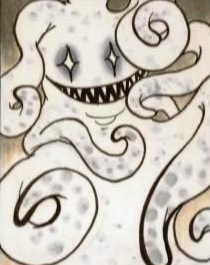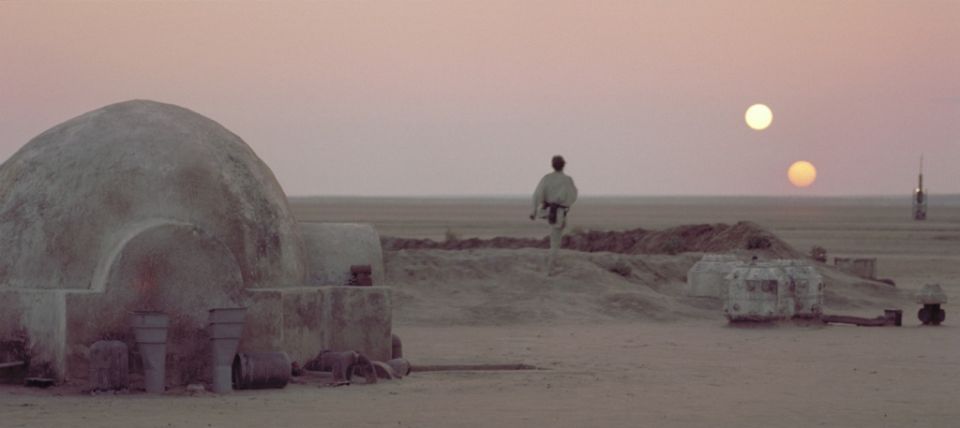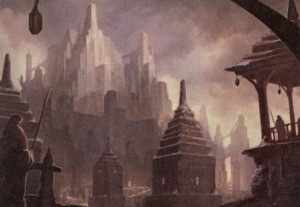 I’m going to shout it from the hills: I love the Bantam era. I love warlord and superweapon of the week. I love silly, disjointed things that years later, make us wonder what exactly we were thinking when we first read this. I love the things that don’t neatly fit into the greater Star Wars puzzle, and there is much to be said in defense of embracing the weird. We’re in a new era of Star Wars now, and with that comes all the unexplored territory. We don’t have to avoid the mistakes of Legends; in fact, I could happily argue that many of those mistakes are better in the long term.
I’m going to shout it from the hills: I love the Bantam era. I love warlord and superweapon of the week. I love silly, disjointed things that years later, make us wonder what exactly we were thinking when we first read this. I love the things that don’t neatly fit into the greater Star Wars puzzle, and there is much to be said in defense of embracing the weird. We’re in a new era of Star Wars now, and with that comes all the unexplored territory. We don’t have to avoid the mistakes of Legends; in fact, I could happily argue that many of those mistakes are better in the long term.
One of the things that Star Wars fandom had run into, in the twilight of the Legends years, was quality issues. Ask a group of Star Wars fans about Fate of the Jedi and Crucible, and you’ll get a wide variety of (frequently negative) reactions. Sometimes people ask me about how I feel about Fate of the Jedi, and my response is usually along the lines of “I remember the hilarious Abeloth illustration that’s on Wookieepedia, that Daala is the worst politician alive, and that Luke and Ben went on a father-son trip that proved that Ben’s taste in women is no better than Luke’s had been.” That is possibly one of the sillier sentences I’ve written in a while, but let’s deconstruct that. What if we didn’t worry so much about things being silly or not making sense? What if wild plots could be the basis for a good story? Because there was a time when we really were thinking that way.
Many of the earliest Star Wars books are from a time when we had no idea about longer-term galactic history. Big chunks of galactic history were a complete blank, and the authors really couldn’t do much filling-in. We didn’t know exactly how the Old Republic fell until the Dark Nest trilogy was released, and of course now that we knew galactic history out-of-universe, it worked its way into Legacy of the Force. But we did fill in about twenty years of galactic history with no good references about what came before. And that led to things that just didn’t make sense in the longer run. Read More
 I can see twelve-year-old Rocky, at the local public library, grabbing Heir to the Empire off the revolving book rack, reading a few pages, and then that night diving into the book and getting thoroughly hooked. I can remember how it felt to be back in a galaxy at war, one where the nascent New Republic had a chance but not a definite one, where the Empire was something of a wounded animal but still a dangerous one, where we didn’t know much about the parameters of the universe we were in, where every new character and plot twist was met with delight. Where I couldn’t wait for the next chapter.
I can see twelve-year-old Rocky, at the local public library, grabbing Heir to the Empire off the revolving book rack, reading a few pages, and then that night diving into the book and getting thoroughly hooked. I can remember how it felt to be back in a galaxy at war, one where the nascent New Republic had a chance but not a definite one, where the Empire was something of a wounded animal but still a dangerous one, where we didn’t know much about the parameters of the universe we were in, where every new character and plot twist was met with delight. Where I couldn’t wait for the next chapter.  We are on the cusp of an awakening. Okay, fine, that was a shameless ripoff from the teasers, but the point stands. We are about to have a large amount of Star Wars content released rapidly in the lead up to The Force Awakens. I’m excited, of course; as a post-ROTJ fan in my heart and soul, we’re finally getting into my favorite content. The things a lot of us have been waiting for. Even for the casual fans or those who aren’t especially familiar with Star Wars, suddenly it’s everywhere around us.
We are on the cusp of an awakening. Okay, fine, that was a shameless ripoff from the teasers, but the point stands. We are about to have a large amount of Star Wars content released rapidly in the lead up to The Force Awakens. I’m excited, of course; as a post-ROTJ fan in my heart and soul, we’re finally getting into my favorite content. The things a lot of us have been waiting for. Even for the casual fans or those who aren’t especially familiar with Star Wars, suddenly it’s everywhere around us.  The very essence of a myth is how it is not set in stone. Stories change as they are told and retold, and multiple versions of one story is considered perfectly reasonable. In the present, there are plenty of franchises that are very well-known, stories that almost anyone can recognize a few references from even if they aren’t in the fandom. Star Wars is very much one of those- by now, pretty much everyone has heard a few of the iconic lines, and the main characters and imagery are known worldwide. We can even argue that by now, Star Wars has transcended the “film franchise” status and is now a modern-day myth. It’s not just the prominence of the Star Wars franchise, but the very narrative structure. Even recent developments, like the Legends announcement, actually fit well with the modern-myth status.
The very essence of a myth is how it is not set in stone. Stories change as they are told and retold, and multiple versions of one story is considered perfectly reasonable. In the present, there are plenty of franchises that are very well-known, stories that almost anyone can recognize a few references from even if they aren’t in the fandom. Star Wars is very much one of those- by now, pretty much everyone has heard a few of the iconic lines, and the main characters and imagery are known worldwide. We can even argue that by now, Star Wars has transcended the “film franchise” status and is now a modern-day myth. It’s not just the prominence of the Star Wars franchise, but the very narrative structure. Even recent developments, like the Legends announcement, actually fit well with the modern-myth status. , but there are still places too remote to easily access? There’s a fine balance in science fiction of allowing technology to be advanced enough to travel through space, while maintaining a sense of exploration and wonder. Star Wars accomplishes this feeling well, just by looking at a map of the galaxy.
, but there are still places too remote to easily access? There’s a fine balance in science fiction of allowing technology to be advanced enough to travel through space, while maintaining a sense of exploration and wonder. Star Wars accomplishes this feeling well, just by looking at a map of the galaxy.